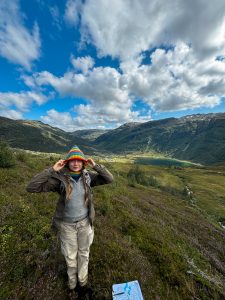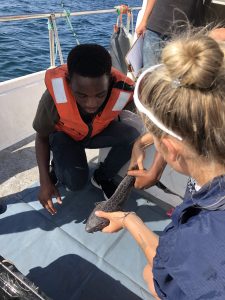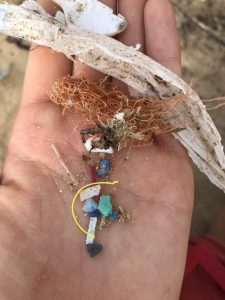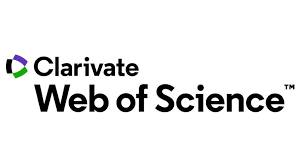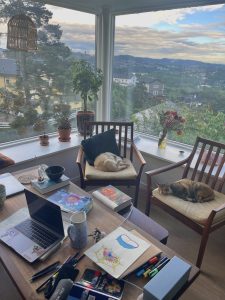Hi everyone!
For the final semester of my bachelor’s degree in Biology, I decided to take a different approach to my research practice. After my previous experience as an intern abroad as well as field work with UiB I wanted to try something that challenged me… something new. So I found a project doing a systematic literary analysis, called a bibliometric analysis! This means I chose a theoretical approach to the subject and had most of my work at home by the computer, something I’ve always found challenging, but know is so important…
I found a supervisor at NORSE doing projects on microplastics, and the different microfibres they’re composed of. This topic excited me and he proposed a project where I do a bibliometric analysis on the microfibres from textile in different environments. I used the Web of Science database tool to find the literature matching my search string that I composed after several trials and errors. The library helped me in the process, guiding me through the use of this amazing tool. My results were 605 articles that I manually screened, removing all the articles that were irrelevant to our project. Leaving me with 302 articles that I again manually read through and sorted in categories. This gave me a very interesting insight on how the existing published literature on the topic had been conducted and increased over the past 20 years. It showed gaps and overrepresented areas, giving a clearer picture of where future studies could be directed to better understand the impact of microfibres on our precious environment.
The method of systematic searching is detailed and requires close attention on the screen—something I hadn’t previously considered “my thing.” But to my surprise, I grew to really enjoy it! It turned out to be incredibly relevant to my interest in scientific writing and gave me a better understanding of how scientific reviews are built. I also realised that this method is useful across research fields—helping us not only see what we already know, but also where we urgently need more knowledge in order to move forward as a sustainable, informed society.
BIO299 was a great subject that I would do every semester if I could, giving such an important opportunity to explore areas of interest and new methodologies within our field. This curiosity based learning is so powerful and I recommend anyone taking this subject!
Also if anyone is in a personal situation and has to stay at home more than usual for a period of time, this type of research practice is a possibility to keep learning and making progress even if you can’t come to campus 🙂
Lastly a big Thank you to Farhan at NORSE for making this possible and for your guidance and support throughout the project!
